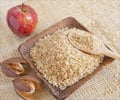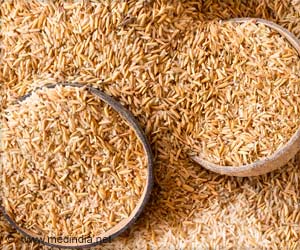A new breed of rice — Frontière — has the lowest Glycemic Index (GI) of any rice. It has 53% more protein than regular rice.

‘Low Glycemic Index foods place a higher demand for insulin in the body. They also lead to more dramatic dips in blood glucose after the spike, potentially causing hunger, carbohydrate cravings and weakness.’





According to blogger Herry Utomo, he, his colleague Ida Wenefrida and their teams at Louisiana State University have been working on breeding a rice that is higher in protein — and has a lower GI for many years. In addition to the 750 million people suffering malnutrition, there are more than 260 million rice-eating people worldwide are affected by diabetes. Providing low glycemic rice that can reach into a great portion of these people from diverse cultures with different rice-eating preferences is a truly monumental challenge.
The low GI, high protein rice that enters the US markets this year perhaps can be used as an initial step to meet these great challenges. Frontière is sold commercially as ’Parish Rice’ and ’Cahokia Rice’. It is currently being grown on farms in Illinois and Louisiana.
How was this New Variety Bred?
The pursuit for perfect rice started with 7 years of research using traditional mutational breeding techniques. This helped to acquire new genetic capabilities for the two traits of low GI and higher protein. Both traits are rarely expressed in natural rice populations.Retaining the premium standards for grain qualities for the U.S. long grain rice was another important consideration while carrying out the process.
To provide a strong genetic foundation, rice cultivar ’Cypress’ was selected as a parental line in the mutational breeding. Cypress is well known for its high milling quality with a capability to maintain high whole-grain milling yields at lower harvest moisture across different environments. This provides a great genetic source for an ideal grain quality consistency.
Advertisements
The chemical ethyl methane sulfonate was used on Cypress to breed new varieties. This chemical creates conditions that allow for faster mutations in plants, which speeds up the breeding process. All traces of chemicals are removed, and no residue remains in or on the plants.
Advertisements
The successful variety was finally released as cultivar ‘Frontière’ in 2017. Phenotypically, Frontière is very similar to Cypress. It consistently performs well in diverse rice growing environments like Southern and Midwest U.S. and Puerto Rico. The team used conventional mutational breeding to acquire these exceptional characteristics to express naturally on its own. This new rice is not transgenic (non-GMO).
Characteristics of ‘Frontière’
Protein. The increased protein content in ‘Frontière’ will help in the optimal functioning of the human body. Over 750 million people globally are malnourished due to protein deficiency. More than a half of them are in the rice eating countries where rice is eaten thrice a day.Rice with higher protein content provides the additional protein required to help reduce protein deficiency. For developed countries, using higher protein rice can reduce the amount of red meat consumed.
Low GI. As we eat food or beverage that is high in carbohydrates, our body breaks down the carbs into glucose. The glucose goes into the bloodstream causing blood glucose (blood sugar) levels to rise. High-glycemic foods lead to a quicker and greater spike in blood sugar levels.
‘Frontière’s’ low GI alleviates these problems and is especially helpful for diabetic patients who must watch their insulin levels.
Taste, Cook and Appearance. Consumer acceptability of any new variety of food is critical. Without it the efforts will not reach the intended goals. The cooking quality, grain chemistry, appearance and taste of the low glycemic rice are virtually the same with typical US long grain rice cultivars such as Cypress and Cocodrie.
This long grain, low glycemic high protein rice can serve rice consumers in the USA as well as many countries of the US rice export destinations including Mexico, Haiti, Japan, Canada and South Korea.
Source-Newswise














